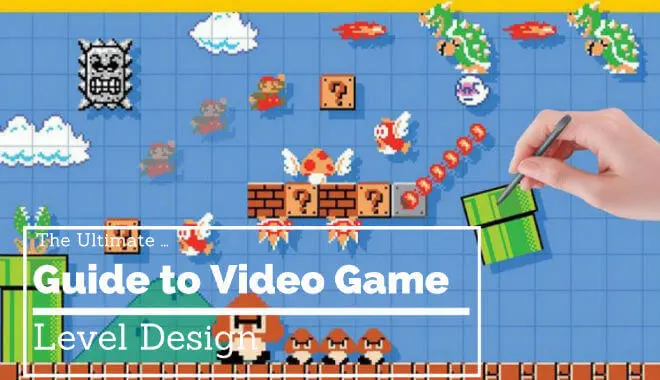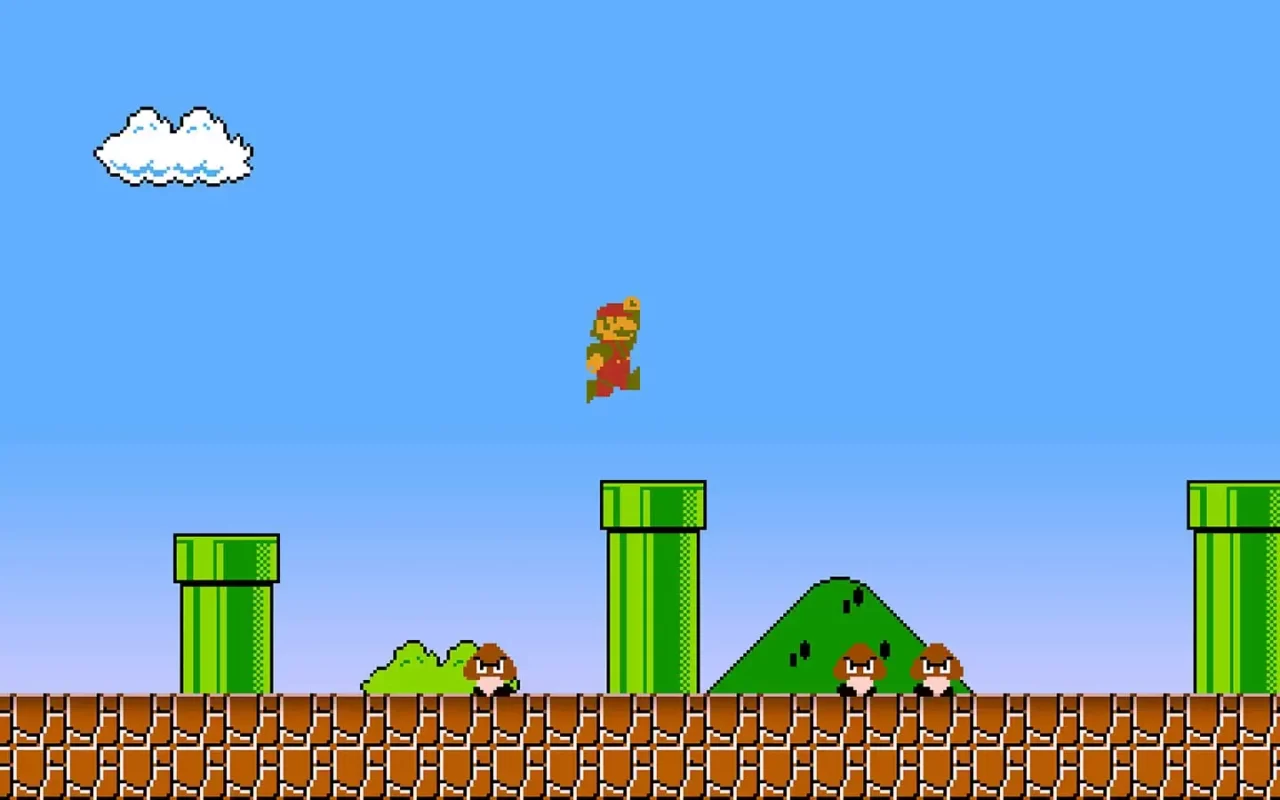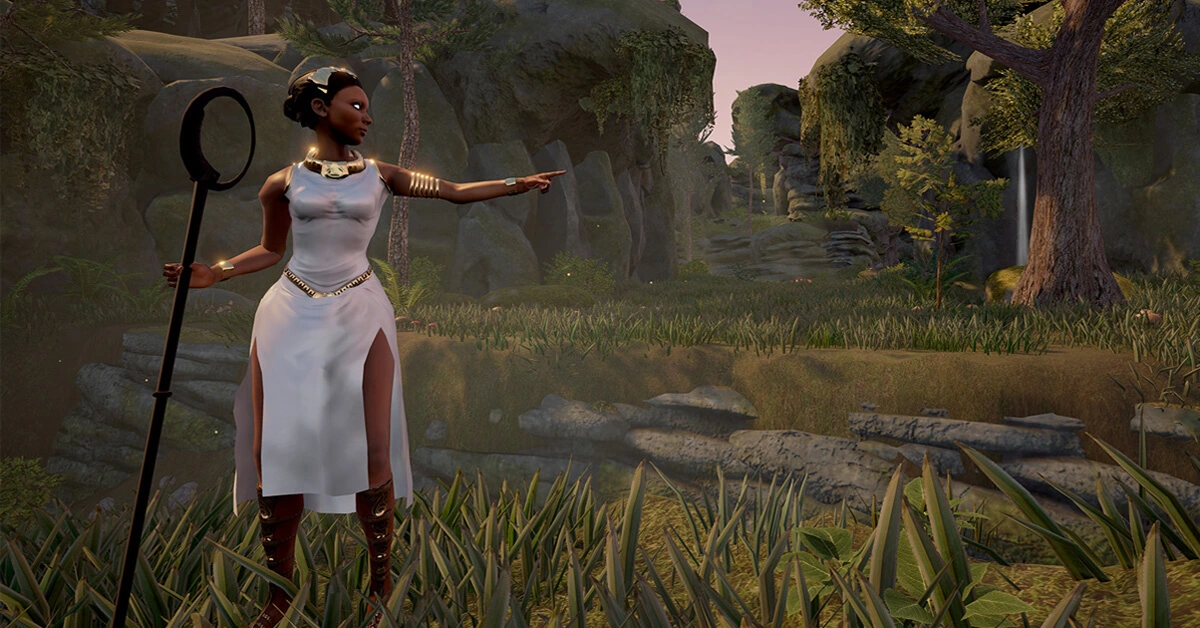Information
What is Level Design in Games?
Level design is a crucial element in the creation of video games, shaping how the player experiences the game world, characters, and narrative. It is a complex discipline that incorporates architecture, storytelling, puzzles, and enemy placement to provide players with a memorable experience. In this blog post, we'll explore more about what level design is in video games and examine the role that level designers play in creating immersive gaming experiences. So whether you're a seasoned gamer or a curious newbie, read on to learn more about the world of video game-level design.

Source : 1.bp.blogspot.com
- Definition of level design
- Role of level design in game development
- Creating stages and missions for games
- Importance of level design in providing players with goals and enjoyable experiences
- Designing entertaining playgrounds for players
- Understanding gameplay and designing levels accordingly
- Specialization of game design: level design
- Considering the player's character in level design
- Implementing game design through level design
- Elements of level design: environment art, game assets, etc.
Definition of level design
As a game designer, I know the importance of level design in creating successful games. But what exactly is level design? In simple terms, it's the creation of video game levels, locales, missions, or stages. It involves a combination of spatial design, art, psychology, programming, and culture. From the player's perspective, there is no difference between levels, missions, or stages. They all offer unique challenges and experiences for the player.
So why is level design important in game development? Well, it plays a key role in providing players with clear goals, enjoyable experiences, and entertaining playgrounds. Understanding player psychology and needs are essential in creating engaging and challenging environments. Balancing difficulty and progression allows players to feel a sense of accomplishment and keeps them motivated to continue playing.
As a specialization of game design, the level design focuses on the creation and practical implementation of levels, environments, stories, and quests. When designing levels, it's essential to consider the player's character and abilities. Each level should offer unique challenges and opportunities for the player to utilize their skills.
Implementing game design through level design involves creating an immersive world and providing players with a sense of purpose. This is where elements such as environment art and game assets come into play. The architecture of a level is crucial in creating a compelling and enjoyable experience for the player.
In conclusion, the level design is a vital aspect of game development that involves much more than just creating stages and missions. It requires a deep understanding of player psychology, game design, and the technical expertise to bring it all to life. By focusing on creating engaging and immersive environments that offer unique challenges and opportunities, level designers can create games that players will love.

Source: blogs.geniteam.com
Role of level design in game development
As a level designer, my role in game development is paramount. I am responsible for creating the stages and missions players will experience throughout the game. My goal is to keep players engaged, providing them with goals and enjoyable experiences.
To achieve this, I need to have a deep understanding of player psychology and what they need from a game. By creating engaging and challenging environments, I can balance difficulty and progression, allowing players to improve their skills and feel a sense of achievement.
I must understand gameplay and design levels accordingly. Every level needs to have its unique challenges and offer something new for the player to experience. This way, they remain hooked and excited about playing the game.
As a specialist in level design, I know how crucial it is for the levels to be connected to the overall game design. It is the level designer's job to ensure that each level is in line with the game's overall theme and narrative and that the challenges presented are appropriate and enjoyable for the player.
Finally, I need to focus on the elements of level design that make a game feel well-designed and polished. Environment art, enemy placement, and game assets, such as power-ups, are just a few examples. By taking a comprehensive view of all these aspects, I can help develop a game that players will enjoy and want to come back to.

Source: www.gamedesigning.org
Creating stages and missions for games
As a level designer, my primary role is to create the stages and missions that make up a game. This process involves pre-production, combat design, layout, and balancing the difficulty and progression of the game.
To create engaging gameplay experiences that keep players coming back for more, I understand player psychology and needs, and design levels accordingly. I focus on providing players with goals and enjoyable experiences by designing entertaining playgrounds and challenging environments.
When creating stages and missions, I also take into account the player's character and the type of game being developed. For example, if the game is focused on fast-paced action, I might design levels that have more combat encounters than puzzles or exploration.
In addition to designing levels, I also work closely with environment artists, sound designers, and other game development professionals to implement game design through level design. This includes ensuring that game assets, such as enemies and obstacles, match the game's theme and tone and are implemented in a way that enhances the player experience.
Overall, the level design is a vital part of game development and designing engaging and challenging stages and missions is essential to creating a successful game. As a level designer, my job is to create gameplay that is fun, immersive, and memorable for players.

Source: res.cloudinary.com
Importance of level design in providing players with goals and enjoyable experiences
As a level designer, my main objective is to provide players with an enjoyable and engaging experience throughout the game. This is achieved by creating levels that provide players with clear goals and objectives that are challenging yet achievable. A well-designed level provides players with a sense of progress and achievement that motivates them to continue playing.
The importance of level design in achieving these goals cannot be overstated. It is the role of level design to create a world that not only looks beautiful but also provides players with challenges designed to test their skills and abilities. The level design must balance difficulty and progression to ensure that players are neither frustrated nor bored. A well-designed level provides players with a sense of satisfaction and accomplishment when they complete it.
Understanding player psychology is critical to level design. A level designer must consider the needs of players and design levels that cater to their interests and preferences. Different players have different play styles and preferences, and levels must be designed to appeal to a broad range of players.
In addition to creating engaging and challenging environments, the level design also plays a critical role in storytelling. A well-designed level can convey story elements visually, without the need for cutscenes or extensive dialogue. Level design can provide players with a sense of immersion and foster emotional engagement with the game.
The elements of level design such as environment art, game assets, lighting, and sound design all play an important role in creating an immersive and enjoyable gaming experience. A level designer must use these tools effectively to create a cohesive and compelling environment.
In conclusion, the level design is a critical component of game development that plays a crucial role in providing players with goals and enjoyable experiences. A well-designed level caters to the needs of players, provides them with challenges that are satisfying to overcome, and conveys story elements through visual design. As a level designer, it is essential to understand the importance of level design and work tirelessly to create levels that engage and delight players.

Source: playworld.com
Designing entertaining playgrounds for players
As a level designer, my ultimate goal is to create an entertaining playground for players. To achieve this, I take into consideration player psychology and needs, as well as the gameplay and character development of the game.
To design an entertaining playground, I focus on creating engaging and challenging environments that balance difficulty and progression. I make sure that players have clear goals and objectives, and that the environment supports those goals.
One important aspect of designing a successful level is to understand the player's character. Every character has unique traits and abilities, and as a level designer, I need to ensure that the level design complements these traits. For example, if the character is good at jumping, I design challenges that require jumping skills.
Another key element in level design is to implement game design through level design. As a designer, I need to be familiar with the mechanics of the game and incorporate them into the level design. This helps to create a seamless and immersive player experience.
To achieve an entertaining playground, I also consider the elements of level design, such as environmental art and game assets. These elements help to create a sense of immersion and support the story of the level.
Overall, designing an entertaining playground for players requires a deep understanding of game design, player psychology, character development, and level design elements. With careful consideration of these factors, level designers can create levels that provide players with memorable and enjoyable experiences.

Source : starloopstudios.com
Understanding player psychology and needs
Understanding player psychology and needs are crucial for designing successful levels in games. As a game designer, it is important to understand the motivation behind players' behaviors and actions. This helps in creating levels that are engaging and challenging, yet not too frustrating.
When designing levels, it is important to create environments that appeal to players' interests and preferences. This can be achieved by taking into consideration factors such as the age group of players, their cultural background, and their personalities. In addition, players have different levels of cognitive abilities, so it is vital to design levels that cater to these differences.
Balancing difficulty and progression is also an essential aspect of level design. Levels that are too easy may not provide enough challenge to keep players interested, while levels that are too difficult may discourage players from playing further. Understanding players' capabilities and limitations, and designing levels that gradually increase in difficulty, can help maintain player engagement.
It is also important to consider the gameplay mechanics when designing levels. Players will have different strategies for playing the game, so it is essential to create levels that cater to these strategies. Understanding player behavior and implementing different gameplay mechanics can help in designing levels that are enjoyable and rewarding.
Overall, understanding player psychology and needs is an essential aspect of level design. It helps in creating levels that engage players, challenges them, and provide them with enjoyable experiences. By considering their interests, abilities, and gameplay strategies, designers can create levels that keep players coming back for more.

Source: www.nuclino.com
Creating engaging and challenging environments
As a level designer, my primary goal is to create engaging and challenging environments for players. To achieve this, I consider the needs and psychology of players when designing the game environment. I carefully balance the complexity of the level with the player's progression through the game.
One of the key factors in creating a challenging environment is ensuring that the level is not too easy or too hard. Players should feel challenged but not frustrated, and I achieve this by designing levels that build on skills previously learned and progressively add new challenges.
To make the environment engaging, I try to create an atmosphere that will captivate players and draw them into the game world. This involves using a variety of gameplay mechanics, visual and auditory cues, and level design elements such as secret paths, hidden treasures, and puzzles.
As I design the levels, I also consider the player's character and their abilities. I try to create levels that complement the character's abilities and strengths, allowing them to showcase their skills and feel empowered. This creates a satisfying experience for players and keeps them engaged in the game.
To implement game design through level design, I work closely with other members of the development team such as writers and artists to take into account the game's story and visual style. The environment art and game assets are carefully selected to create an immersive and realistic game world that players will want to spend time exploring.
Overall, creating engaging and challenging environments involves a deep understanding of player psychology, gameplay mechanics, and design elements. It is an essential aspect of level design and plays a crucial role in providing players with an enjoyable and memorable gaming experience.

Source: game-wisdom.com
Balancing difficulty and progression
As a game designer, when it comes to creating enjoyable experiences for players, balancing difficulty and progression is key. To ensure that players remain engaged and excited throughout the game, the difficulty of the levels must increase gradually over time. This requires a deep understanding of the player's abilities and needs, which is where level design comes in.
One way to balance difficulty and progression is to gradually introduce new challenges that build upon the skills that players have already acquired. For example, if a player has become proficient in one aspect of the game, such as jumping or climbing, the next level should challenge them to use those skills in a new and different way. This will keep the game fresh and exciting while also allowing players to feel a sense of accomplishment as they progress through the levels.
In addition to creating increasingly difficult challenges, it's important to keep in mind the player's overall progress throughout the game. For example, if a player is struggling with a particular level, it may be necessary to provide them with additional tools or resources to help them overcome the challenge. This could take the form of power-ups, new abilities, or even a simplified version of the level that allows players to practice certain skills.
Ultimately, balancing difficulty and progression requires a deep understanding of player psychology and needs. By creating engaging and challenging environments that gradually increase in difficulty, level designers can provide players with a sense of accomplishment and satisfaction while also keeping them engaged and excited about the game. So if you're a game designer looking to create an unforgettable gaming experience, remember that balancing difficulty and progression is key.

Source: upload.wikimedia.org
Understanding gameplay and designing levels accordingly
When it comes to creating levels in games, it's important to understand how the gameplay works and how players interact with the game world. To do this, I always start by analyzing the mechanics and rules of the game, which are collectively referred to as “gameplay.” This understanding allows me to design levels that fit seamlessly into the game's overarching mechanics and create an engaging experience for players.
In addition to this, I also consider the player's needs and psychology when designing levels. This means creating environments that are both entertaining and challenging, but also balancing the difficulty level to ensure that players can progress through the game without feeling overwhelmed.
Furthermore, I keep in mind the character that the player controls and design levels that fit their abilities and strengths. This means taking into account the character's skills and movement mechanics to create a level design that is both intuitive and enjoyable to play.
All of these elements come together to form a cohesive and enjoyable experience for players, making level design a vital part of game development. As a level designer, I pride myself on creating engaging playgrounds for players that keep them coming back for more, providing a memorable and enjoyable experience from start to finish.

Source: www.digipen.edu
Specialization of game design: level design
As a game designer, specializing in level design is crucial to creating an immersive and enjoyable player experience. With advanced skills in 2D and 3D game design, we can create levels that showcase environment art, game assets, and a balance of difficulty and progression.
Understanding player psychology and needs are essential in crafting entertaining playgrounds for players. We must consider the player's character and design levels accordingly to provide achievable goals and challenges. Our goal is to create a balance of engaging and challenging environments that players will enjoy exploring.
Level design plays a significant role in implementing the game design. We must think beyond the mechanics of gameplay and consider how each level fits into the game's overall vision. Our portfolio artifacts include complete levels that showcase how we can integrate art assets based on the level requirements, coding, and balancing encounters.
In conclusion, as game and level designers, we are responsible for creating fun and engaging games. Specializing in level design allows us to tackle the challenges of creating levels that provide players with enjoyable experiences while incorporating gameplay, storyline, art, and technology. The Sheridan Game Level Design program provides industry-specific skills to help us become successful in designing levels that make games come to life.

Source : starloopstudios.com
Considering the player's character in level design
When it comes to level design in games, considering the player's character is crucial. As a level designer, I must keep in mind the character's personality, backstory, and abilities while creating levels, missions, or stages. This is important because it helps to immerse the player in the game world and adds depth to the character's development.
By designing levels tailored to the character's abilities, players can experience a sense of growth and progression as they navigate through the game. Furthermore, taking the character's story and motivations into account can inspire unique gameplay mechanics that offer a fresh and engaging experience to players.
To achieve this, understanding player psychology and needs is crucial. By knowing what aspects of the character the player identifies with, I can create a more meaningful experience that resonates with them. This way, the player can take an active role in shaping the story, and feel connected to the character on a deeper level.
In summary, considering the player's character when designing levels is a key element of game development. By understanding and incorporating the character's personality, backstory, and abilities, I can create an immersive and engaging experience that players will enjoy.

Source: www.designer-daily.com
Implementing game design through level design
As a Level Designer, my role is to translate the game design into practical and immersive levels for players. To implement game design through level design, I have to understand the game mechanics, player psychology, and their needs. The key is to create engaging and challenging environments that balance difficulty and progression.
One important aspect is to consider the player's character, abilities, and limitations. A good Level Designer knows how to provide players with achievable goals and enjoyable experiences by creating entertaining playgrounds. I strive to produce quality gameplay and advance the storyline by carefully selecting the obstacles, enemies, and rewards in each level.
To achieve this, I use various elements of level design, such as environmental art and game assets. I create an immersive experience by paying attention to details like lighting, sound effects, and textures. A successful Level Designer knows how to guide players through the levels with visual cues, level layout, and pacing.
In conclusion, implementing game design through level design requires a deep understanding of the game and players. By creating stages and missions that balance challenge and progression, and by using all elements of level design, a Level Designer can provide players with enjoyable and memorable gameplay experiences.

Source: EU-images.contentstack.com
Elements of level design: environment art, game assets, etc.
As a level designer, it's essential to understand the various elements that come together to create an immersive game world. Environment art, game assets, themes, and visual design are all key aspects of level design. When creating a world-class level, it's crucial to consider every detail, from the colors and textures to the elements that make up the composition. Game assets, such as collectibles, obstacles, and enemies, must also be considered and strategically placed to provide a challenging and engaging experience for players. Ultimately, the goal is to create an environment where players can lose themselves, filled with rich details that enhance the overall experience. By combining these elements with a strong story and gameplay mechanics, players can become fully immersed in the game world and enjoy an unforgettable experience. As a level designer, my role is to bring the game to life and create a world that engages players on every level, from the visuals to the gameplay. In every aspect of my work, I strive to provide players with a unique and enjoyable experience that they'll remember for years to come.